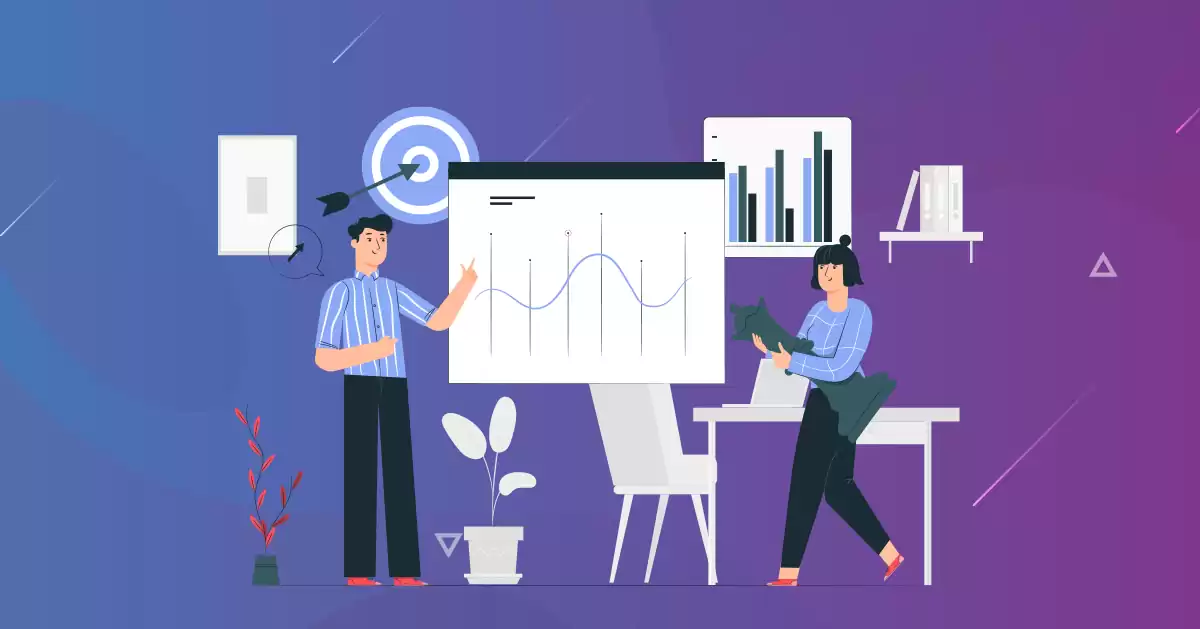To remain competitive, organizations must have a clear perspective of all their data, which is where business intelligence (BI) technologies come in. After all, approximately half of all firms now utilize BI tools, and estimates suggest that this trend will continue in the coming years.
However, for individuals who haven’t yet chosen a tool or are merely interested in learning more, it might be difficult to define BI. We prepared this comprehensive reference to educate individuals on what business intelligence is, how it works, and other topics.
Definition of Business Intelligence
Business intelligence (BI) is the use of software and services to turn data into actionable insights that help a company make strategic and tactical business decisions. To offer users comprehensive insight into the condition of the company, BI technologies access and analyze data sets and show analytical results in reports, summaries, dashboards, graphs, charts, and maps.
Business intelligence is also used to describe a set of technologies that enable rapid, easy-to-understand access to insights about an organization’s present situation based on accessible data.
How Does It Work?
BI solutions have typically relied on data warehouses for their baseline data. A data warehouse consolidates data from several sources into a centralized system to facilitate business analytics and reporting. The warehouse is queried by business intelligence software, which then displays the findings to the user in the form of reports, charts, and maps.
Choosing a Business Intelligence System: What to Look for
The solution must be as user-friendly and accessible to all levels of employees inside a firm in order to make BI a viable option for business units—or anybody else with a low level of technical understanding. If you want to bring this solution to life, business intelligence services will help you. If you make the right choice, the company will do everything in accordance with your expectations.
A Unified BI Platform
Consider a system that provides a single, integrated application platform. Many businesses have an existing business intelligence ecosystem that includes numerous solutions for reporting, discovery, analysis, and other services. Working with any of these options may be costly and need substantial technical expertise. Compatibility concerns might arise when several solutions are used.
A single-platform strategy provides an end-to-end solution that encompasses data collection, analysis, and interpretation, with everything functioning together to eliminate compatibility difficulties.
Business Intelligence as a Service (BIaaS)
A BI solution should be simple to use for users throughout your organization, whether they are in the office, working remotely, or on the road. A cloud solution has the greatest accessibility and availability possibilities. It may be accessible whenever and wherever it is required, for personal use or to share with colleagues.
Analytics With Augmentation
You want a smart solution that makes BI simple—one that includes augmented analytics and integrated machine learning. This kind of solution may assist users in obtaining, analyzing, interpreting, and communicating information, as well as in simplifying and automating operations.
Your solution should be capable of automating data preparation as well as the collecting and aggregation of information from numerous sources, hence speeding up the process and lowering the possibility of mistakes.
You want a smart solution that enables you to search for what you need fast and simple and access to the data directly—one that allows you to ask questions and get responses in human language rather than code.
Visualization of Data
Many smart systems include data visualization, which allows data to be automatically transformed into pie charts, graphs, and other sorts of visual presentations. Users may see and grasp patterns, correlations, and developing trends that might otherwise go missed in a spreadsheet of raw statistics.
By developing rich data mashups, you may get fresh and unique insights via data visualization. You may also tell tales about your company by employing high-impact images that don’t need any particular skills to understand. Would you like to receive more detailed information? Contact the professionals from Devox Software.
Business Intelligence’s Future Role
Because business intelligence is always growing to stay up with corporate demands and technology, we identify current trends each year to keep users up to know on advancements. Recognize that artificial intelligence and machine learning will continue to evolve and that firms may include AI insights into a larger BI strategy.

